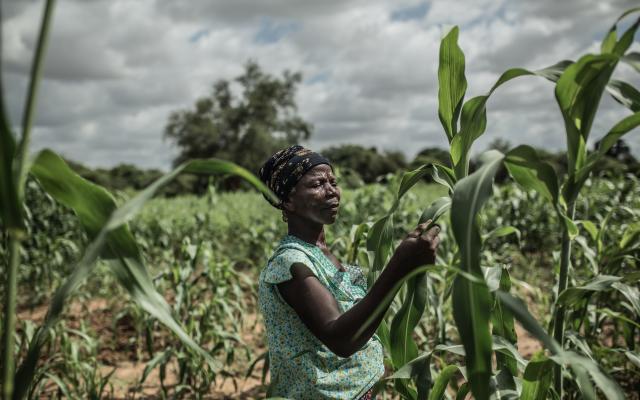
Pastoralist communities in the Somali region have been suffering 4 years of erratic rains and droughts and millions have lost their animals and livelihoods. Crops have been decimated and communities that still have access to water and pastures are in a dire situation since those resources are not enough to cover their basic needs.
We are in a climate emergency. It is wreaking havoc across the globe and it's the poorest communities and women who are paying the heaviest price.
Millions of people from Mozambique to Guatemala have already lost their homes, livelihoods, and loved ones as a result of more dangerous and more frequent floods, droughts, wildfires and storms, caused by a climate crisis they did not create.
The unequal impacts of the climate crisis
Many poor countries already experience weather extremes and lack the resources to adapt to the impact of climate change – for example adequate weather monitoring stations or flood barriers. Poor people are also more vulnerable to climate change because they rely on rain to grow crops, live in poorly built homes in exposed areas, and lack savings or insurance to help them recover after a disaster.
With the frequency and intensity of climate-related hazards increasing, the ability of people living in poverty to withstand shocks is gradually being eroded. Each disaster is leading them further down the spiral of deeper poverty and hunger, and eventually displacement.
Women amongst the hardest hit
Across the world women are often responsible for providing and preparing food, collecting water, and tending crops. Droughts and floods damage harvests which means they have to find other ways to bring in income and buy the food their families need.
This increased workload leaves women with very little time for other income generating activities or taking part in community life, a problem further compounded by social expectations of women’s role in society. All too often, they also lack the assets – access to credit, land or property – which would help them cope better with climate impacts.

Noaga Ouèda, from Burkina Faso, lives on the food she grows in the field. She harvests much less now because she is at the mercy of the unpredictable weather. "As there has been less rain than in previous years, we are suffering a lot. Before this, we didn't know hunger, but now we are forced to ration the food so that we can give it to our children."
Forcing people to move
Climate-fueled disasters are the number one driver of internal displacement – forcing millions of people to leave home to seek refuge within the borders of their own country.
Today, you are seven times more likely to be internally displaced by cyclones, floods and wildfires than by earthquakes and volcanic eruptions, and three times more likely than by conflict.
Let's look at the numbers
| x 3 |
The number of climate-related disasters has tripled in 30 years. By the 2030s, large parts of Southern, Eastern and the Horn of Africa and South and East Asia will experience greater exposure to droughts, floods and tropical storms. |
| 20 M |
On average, over 20 million people a year were internally displaced by extreme weather disasters over the last 10 years. Eighty percent of those displaced live in Asia – home to over a third of the world’s poorest people. |
| 10 % |
The richest 10 percent of people in the world produce around half of global emissions. The poorest half of the world’s population - 3.5 billion people - is responsible for just 10 percent of carbon emissions. |
| 100 |
Just 100 companies are responsible for close to three quarters of global emissions (71 percent) and spend millions lobbying against climate action. |
| $700 M |
Between 2008 and 2018, 18 African countries have collectively suffered an annual loss of over 700$ million from climate-related disasters. |
Fighting climate change, fighting poverty
Oxfam campaigns for climate action and works with partners to bring the voices of communities affected by climate change into international negotiations and discussions, to ensure global temperature increases are kept below 1.5C and that people living in developing countries are supported to adapt.
We work with local communities to build resilience in the face of the climate crisis. For example, in northern Ethiopia where droughts are more frequent and severe, we have introduced with our partners a micro insurance scheme for small-holder farmers. In South Africa, we have installed solar panels in schools to demonstrate to the government how off-grid solutions reduce emissions and electricity costs.
We also respond to climate related emergencies around the globe. In the last year alone, with our partners we have provided humanitarian assistance to hundreds of thousands of people caught up in deadly floods, storms and droughts. For example, following Cyclone Idai, which left more than 2.2 million people in urgent need of humanitarian aid, we helped deliver clean water, sanitation and hygiene kits to over 500,000 people.
Photos: Pablo Tosco/Oxfam
